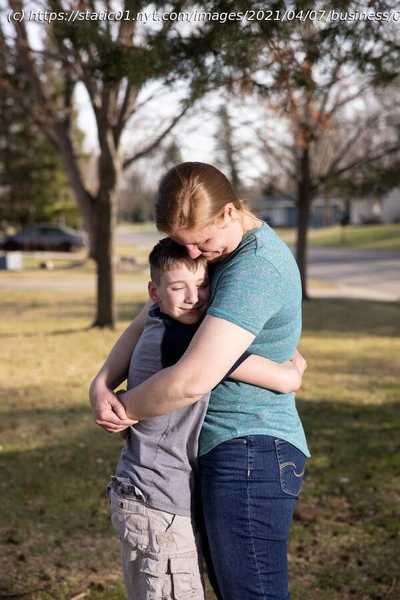Some families have come to prefer stand-alone virtual schools and districts are rushing to accommodate them — though questions about remote learning persist.
Rory Levin, a sixth grader in Bloomington, Minn., used to hate going to school. He has a health condition that often makes him feel apprehensive around other students. Taking special-education classes did little to ease his anxiety. So when his district created a stand-alone digital-only program, Bloomington Online School, last year for the pandemic, Rory opted to try it. Now the 11-year-old is enjoying school for the first time, said his mother, Lisa Levin. He loves the live video classes and has made friends with other online students, she said. In December, Bloomington Public Schools decided to keep running the online school even after the pandemic subsides. Ms. Levin plans to re-enroll Rory for this fall. “It is such a good fit for him,” she said. “We’re really hoping they can continue it for the rest of his school career.” A year after the coronavirus set off a seismic disruption in public education, some of the remote programs that districts intended to be temporary are poised to outlast the pandemic. Even as students flock back to classrooms, a subset of families who have come to prefer online learning are pushing to keep it going — and school systems are rushing to accommodate them. The districts are racing to set up full-fledged online schools even as concerns mount that remote learning has taken a substantial toll on many children’s academic progress and emotional health. Parents and lawmakers, alarmed by the situation, have urged schools to reopen. Last month, Gov. Phil Murphy, a Democrat, went so far as to say there should be no remote learning option for children in New Jersey this fall. Even so, at least several hundred of the nation’s 13,000 school districts have established virtual schools this academic year, with an eye to operating them for years to come, education researchers said. Unlike many makeshift pandemic school programs, these stand-alone virtual schools have their own teachers, who work only with remote students and use curriculums designed for online learning. Demand for virtual schools has soared. Fulton County Schools in Atlanta, one of the nation’s largest school systems, plans to enroll about 1,000 students in its new online school this fall. The Anchorage School District expects about 2,000 children to attend its year-old online school beginning in August. And in Minnesota, the number of state-approved online schools is on track to double this year to 80 or more, from 37 before the pandemic. In a study by the RAND Corporation, “ Remote Learning Is Here to Stay,” 58 out of 288 district administrators — roughly 20 percent — said their school system had already started an online school, was planning to start one or was considering doing so as a postpandemic offering. “This is hardly a panacea or a silver bullet for public schooling,” said Heather Schwartz, a senior policy researcher at RAND who directed the study. But, she added, “there is a minority of parents, a minority of students and even a minority of teachers for whom virtual schooling is the preferred mode. ” Yet a surge of online schools comes with risks. It could normalize remote learning approaches that have had poor results for many students, education researchers said.






